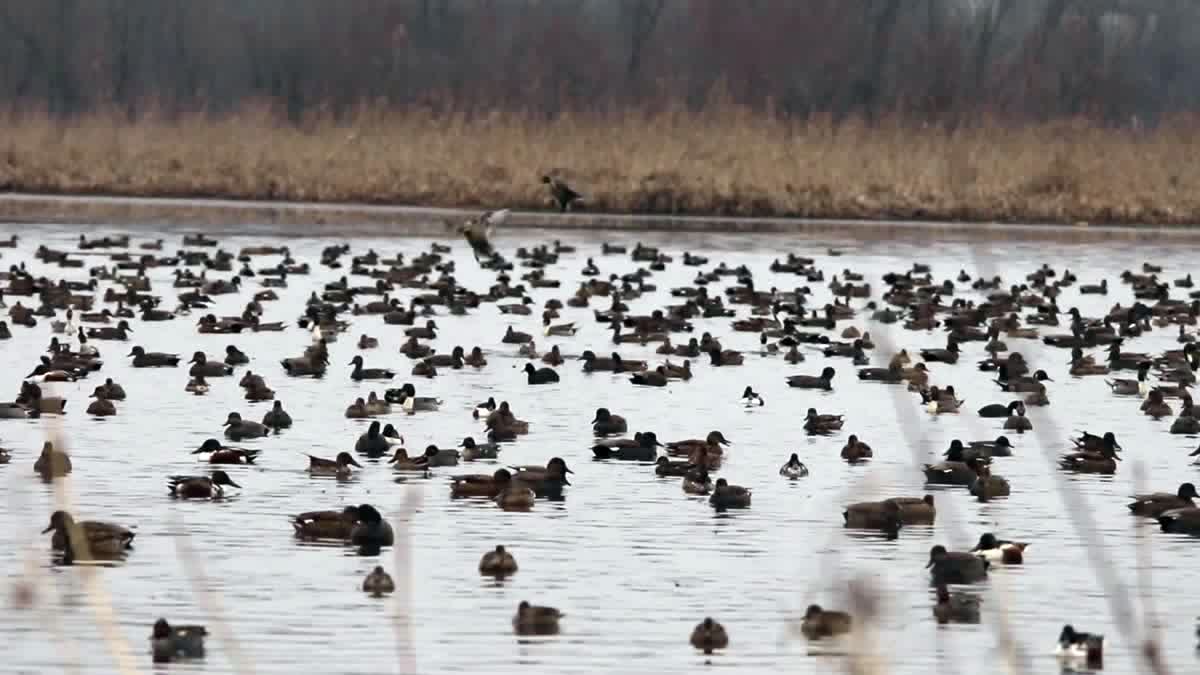Srinagar: Wildlife officials in the region are gearing up for the Asian Waterbird Census (AWC) 2025, set to take place on February 19 across 25 key wetlands in Kashmir. Determining the number of migratory birds and evaluating the ecological condition of these wetlands depend heavily on this annual census.
The Department of Wildlife Protection is spearheading the effort in partnership with the Wular Conservation and Management Authority (WUCMA), with assistance from specialists, academics, and skilled volunteers.
Ahead of the census, an orientation program was held on Tuesday at the Institute of Management, Public Administration, and Rural Development (IMPA) to prepare participants for the scientific exercise.
According to a statement by the Department of Wildlife Protection, volunteers were trained in bird identification, population estimation, and data collection techniques. Students from several universities, SKUAST scholars, and representatives of well-known NGOs like the Wildlife Conservation Fund, SRDE, Wildlife SOS, WRCF, and SEEDS participated in the program. Additionally, officials from several government departments and seasoned birdwatchers joined the training session.
Rashid Yahya Naqash, Regional Wildlife Warden emphasised the migratory trend of birds to Kashmir's wetlands during the period November to March in a bid to project the importance of the Central Asian Flyway. This critical flyway is traversed by birds from China, Russia, Siberia, and Europe.
"The census is an essential scientific exercise, as bird migration is a crucial indicator of wetland health," said Tawheed Ahmad Deva, Regional Wildlife Warden for Kashmir. Over the past two years, census data has recorded over 12 lakh migratory birds in Kashmir's wetlands, underscoring their global ecological importance.
Most of Kashmir's wetlands are holding enough water to meet the needs of the migratory period, says Altaf Hussain, Wetlands Wildlife Warden Kashmir and WUCMA Coordinator. He credited recent measures, including the construction of regulation gates at Hokersar in collaboration with the Irrigation and Flood Control Department. "Water levels at Hokersar are currently the highest they have been in a decade, providing a more stable habitat for migratory birds," he said.
The AWC 2025 will cover key wetlands, including the four designated Ramsar sites—Hokersar, Haigam, Shallabugh, and Wular Lake. For thousands of migratory birds, each location is an essential resting place. Trained staff from the Wildlife Department, WUCMA, Forest Protection Force, and the Forest Department will closely monitor the census. To guarantee the collection of accurate data, teams of volunteers and specialists will methodically record bird species, count numbers, and document behavioural patterns.
A thorough report on species diversity, population trends, and general wetland health will be produced by avian specialists after the field survey. Future conservation policies and wetland management plans will be greatly influenced by the results.
Wular Conservation Authority Coordinator, Owais Farooq Mir, said, "This census is directly linked to the long-term preservation of Kashmir’s wetlands, which are essential for maintaining ecological balance and supporting biodiversity."
Read More:



